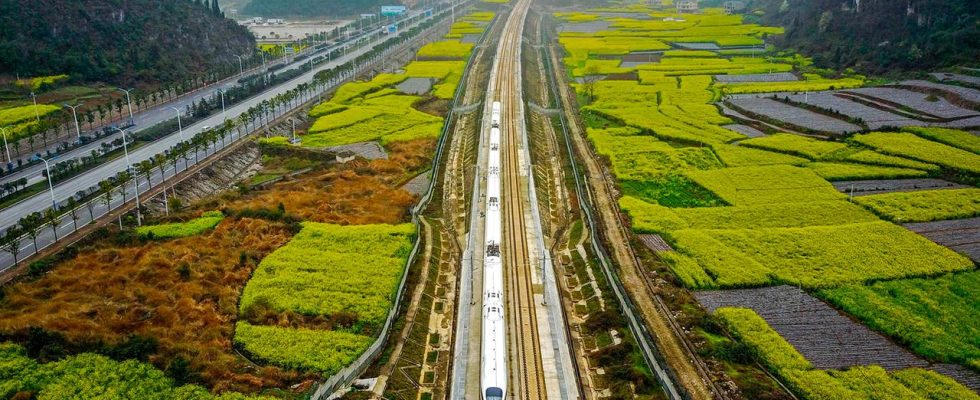background
Airports, train stations, roads, bridges – for years everything in China was designed for expansion. Now the infrastructure is often underutilized. Have the limits of growth been reached?
Anyone traveling from Shanghai to Beijing on the Chinese high-speed train Fuxing will experience speeds of up to 350 kilometers per hour. The ride is virtually smooth and almost always on time. The route between the two metropolises is well booked.
But the journey past fields, meadows and numerous cities also shows finished new development areas that are half empty and train stations with dozens of platforms but hardly any passengers. All in all, this is more than a fleeting impression. Economic researcher Michael Pettis, a professor at Peking University, confirms the observations. He has seen for years that China is reaching its limits to growth.
“The prime example of this development is the relatively poor Guizhou region in southern China. The people there have little income,” said Pettis. “Nevertheless, many bridges and roads were built in the mountainous landscape.” The problem with growing societies is often that they build too much too quickly. “Then they have a fantastic infrastructure, but can no longer generate the costs to maintain it.”
“Investments alone do not bring prosperity”
Pettis observes a disproportion: 70 percent of all high-speed trains in the world run in China. But only 17 percent of global economic output comes from here. Nevertheless, according to the expert, China wants to build as many new high-speed trains in the next five years as Germany, Spain, France and Japan have in operation combined.
So is the Chinese leadership heading in the wrong direction? Pettis thinks there is a lack of sustainability. “In China, the sum of all investments is 44 percent of economic output. That’s a lot.” Normally the rate in high-investment countries is 33 percent, but the global average is only 25 percent. “So China has to reduce. Investments alone do not bring prosperity.”
Consumption should be encouraged
What does that mean for the future? Will the Chinese leadership scrap some of its new building plans? Perhaps. But how does it then want to achieve the feat of keeping the economy on a growth path with strong private consumption? Wages would have to rise, but not so much that jobs would be lost. “If the state builds less, it will fire construction workers. That could mean more unemployed people, but at the same time people should spend more money to stimulate the economy,” explains Pettis.
This in turn requires government aid, which is politically extremely difficult to implement, said the economist. “Because government spending is already too high. Something is brewing over the course of this year.” His forecast: “Economic growth will decline significantly because China can no longer invest to the same extent as before.”
Difficult management of the economy
So the situation is tricky: it represents a real challenge for China’s government to continue to manage the economy the way it has wanted so far. Hardly once in history has there been an entire economy that grew so much so quickly and is now trying to keep the consequences under control.
Just a few days ago, current data came from the country’s statistical offices: There was a strong increase of around four and a half percent for August compared to the previous year – in both consumption and industrial production. Until now, the authorities have always been proud of increasing growth. It is questionable whether it will stay that way.

